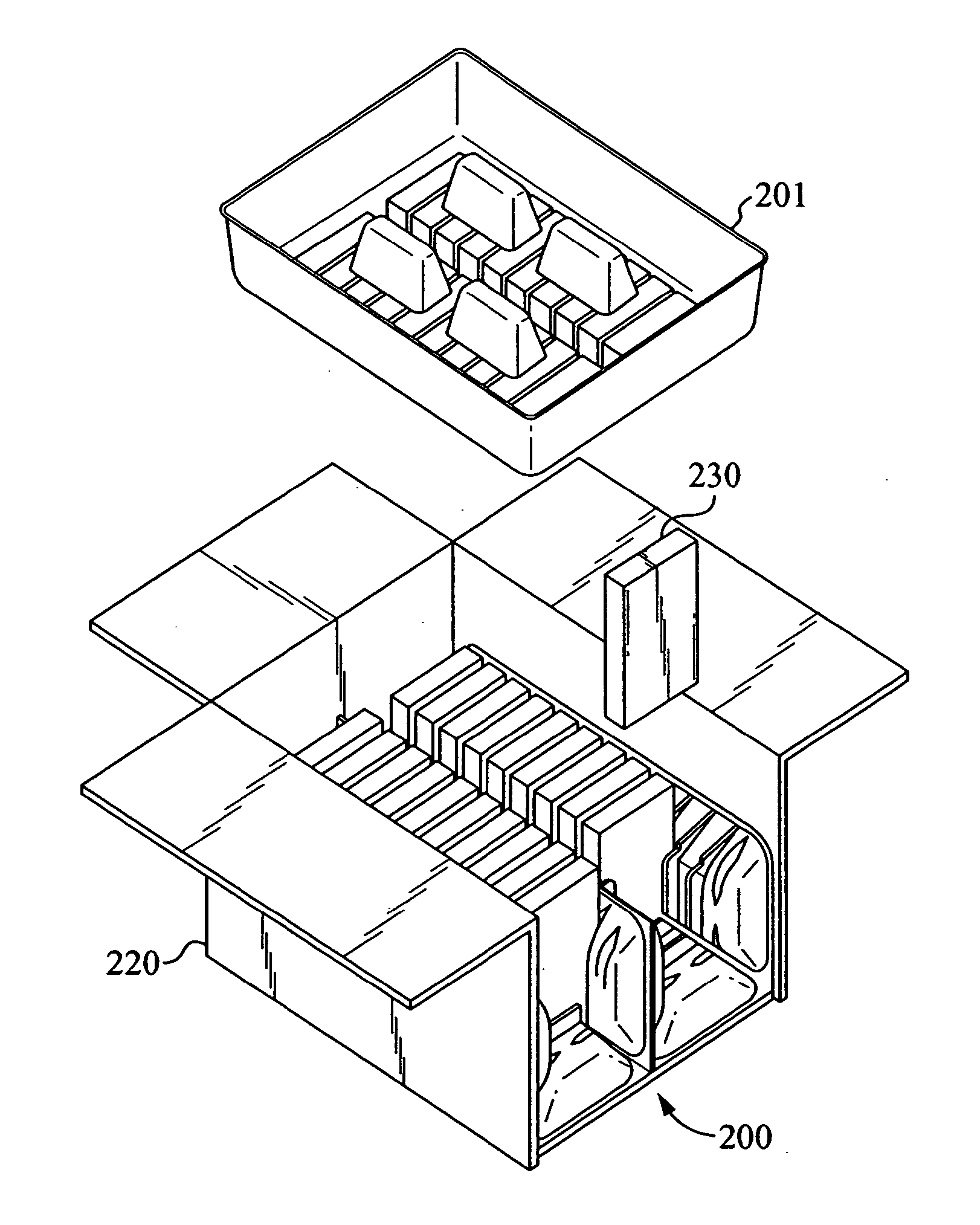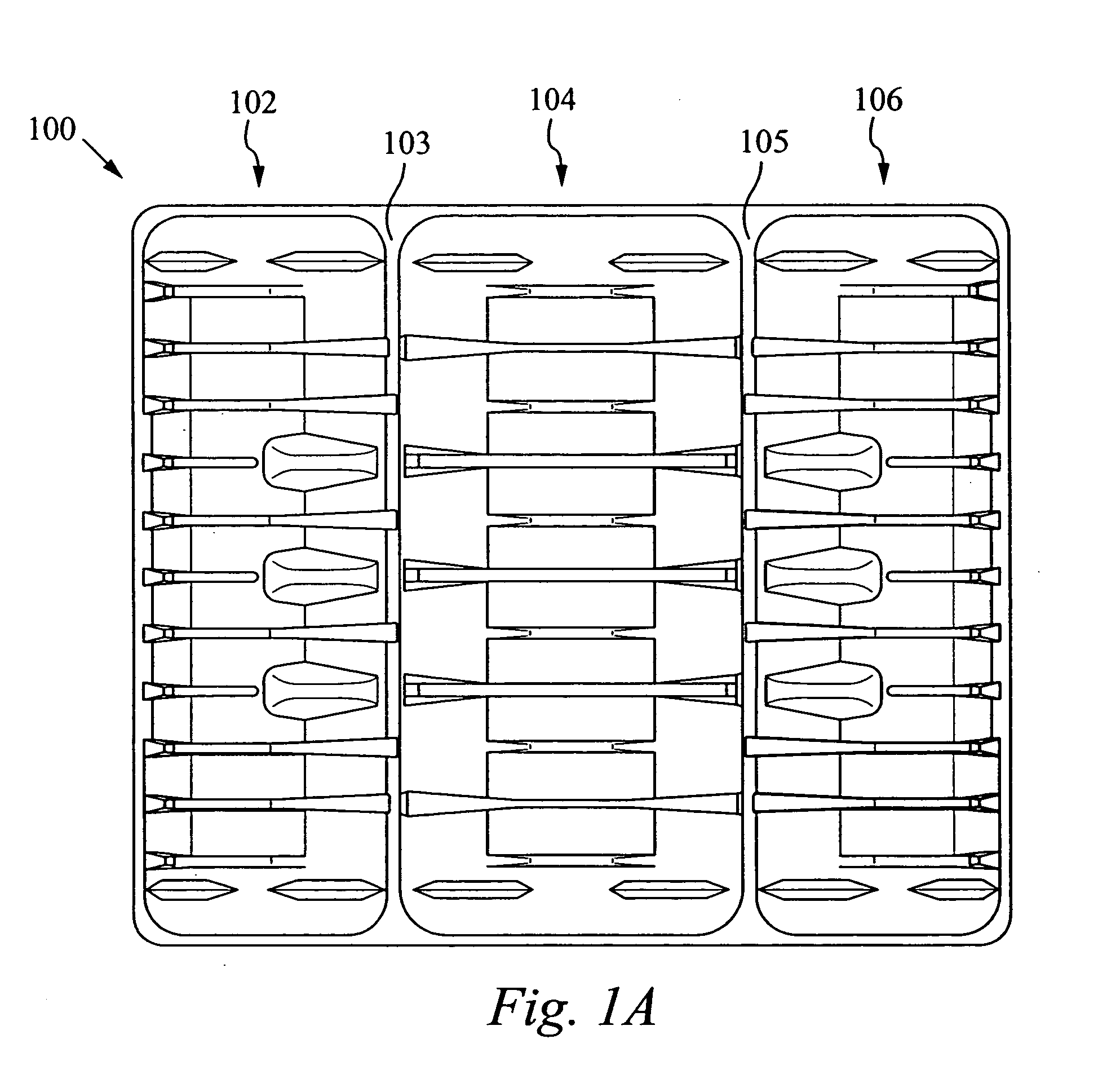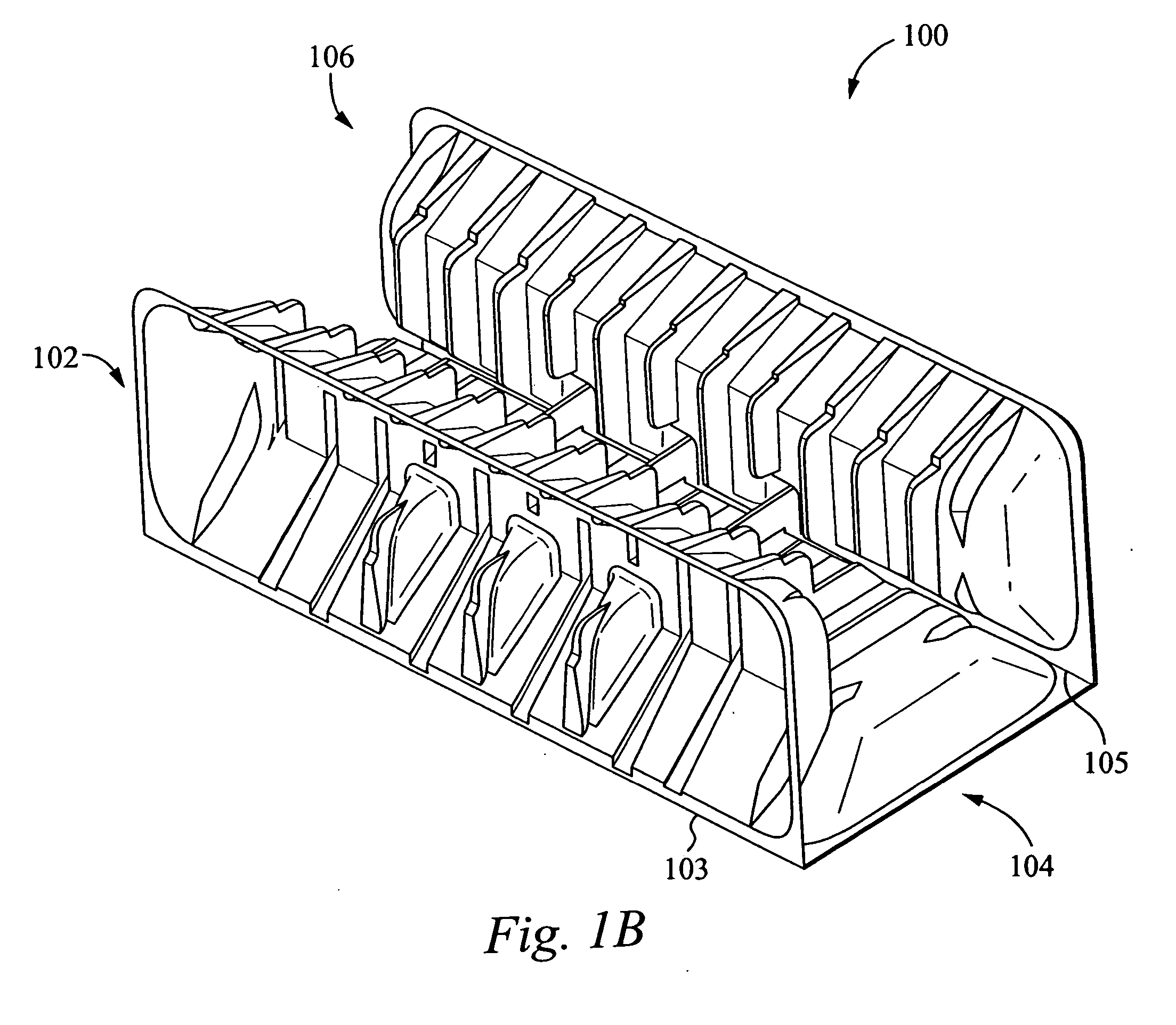Packaging for fragile items
a technology for fragile items and packaging, applied in the field of packaging for fragile items, can solve the problems of damage to fragile items, and damage to fragile items, and achieve the effects of improving the cushioning of fragile items, reducing and hopefully preventing random crush zones or points, and broad weight rang
- Summary
- Abstract
- Description
- Claims
- Application Information
AI Technical Summary
Benefits of technology
Problems solved by technology
Method used
Image
Examples
Embodiment Construction
[0034]FIG. 1A shows a fragility package article 100, according to an embodiment of the present invention, that includes a bottom panel 104 and a pair of side panels 102 and 106. Article 100 is preferably formed from a single sheet of plastic by thermoforming, injection molding, blow molding, or an equivalent technology. The plastic can be a high density polyethylene (HDPE), however other polymeric materials may be substituted depending on the application, including the provision of additives for reducing static electricity. HDPE works well due to its combination of stiffness, flexibility and memory (i.e., its tendency to return to its original shape after shock loading). Sheets of plastic used to produce article 100 should typically have a thickness of about 10 to 90 gauge (mils), however other thicknesses can be used, depending on the application.
[0035] Each side panel 102 and 106 is respectively coupled to bottom panel 104 by integrally formed “living” hinges 103 and 105 that ena...
PUM
 Login to View More
Login to View More Abstract
Description
Claims
Application Information
 Login to View More
Login to View More - R&D
- Intellectual Property
- Life Sciences
- Materials
- Tech Scout
- Unparalleled Data Quality
- Higher Quality Content
- 60% Fewer Hallucinations
Browse by: Latest US Patents, China's latest patents, Technical Efficacy Thesaurus, Application Domain, Technology Topic, Popular Technical Reports.
© 2025 PatSnap. All rights reserved.Legal|Privacy policy|Modern Slavery Act Transparency Statement|Sitemap|About US| Contact US: help@patsnap.com



